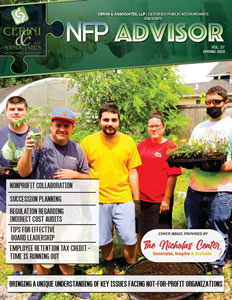Succession planning is an essential process for any business, including non-profit organizations. It is the process of identifying and developing internal talent to fill key leadership positions when they become vacant due to retirement, resignation, or any other reason. Succession planning helps to ensure that the organization can continue to operate effectively and efficiently even when there is a change in leadership. In this article, we will discuss the importance of succession planning for non-profit organizations and provide some practical tips for developing a succession plan.
Why Is Succession Planning Important for Non-Profit Organizations?
Non-profit organizations rely heavily on their leadership to achieve their goals and objectives. Leaders provide direction, vision, and motivation for staff and volunteers, and they are responsible for ensuring that the organization’s mission is fulfilled. When a key leader leaves, it can be challenging for the organization to maintain its momentum and continue to deliver its programs and services. Succession planning can help to mitigate these risks and ensure that the organization can continue to operate effectively even in the absence of a key leader.
Succession planning can also help to ensure that the organization is prepared for the future. By identifying and developing internal talent, the organization can build a pipeline of future leaders who are ready to step into key roles when the time comes. This can help to ensure that the organization is not caught off guard by unexpected departures and can continue to operate smoothly and effectively over the long term.
Succession planning also helps to promote continuity and stability within the organization. When leadership transitions are handled smoothly and effectively, staff and volunteers are more likely to feel secure and confident in the organization’s future. This can help to reduce turnover and ensure that the organization can continue to attract and retain the talent it needs to achieve its goals.
Practical Tips for Developing a Succession Plan
Developing a succession plan can seem like a daunting task, especially for non-profit organizations with limited resources. However, there are some practical steps that organizations can take to develop a succession plan that is tailored to their needs and resources.
Identify key leadership positions:
The first step in developing a succession plan is to identify the key leadership positions within the organization. This may include executive directors, program directors, and board members. Once these positions have been identified, the organization can begin to develop a plan for how to fill these positions when they become vacant.
Assess current talent: The next step is to assess the organization’s current talent pool. This may involve conducting a skills inventory of existing staff and volunteers to identify individuals who have the potential to fill key leadership positions in the future. It may also involve identifying gaps in the organization’s talent pool and developing strategies for filling these gaps through recruitment or training. If current talent is lacking, consider seeking help from outside sources to identify potential candidates. Working closely with professional recruiting firms has become more of the norm lately.
Develop a training and development plan:
Once potential successors have been identified, the organization can begin to develop a training and development plan to help them build the skills and knowledge they need to be effective leaders. This may involve providing leadership training, mentoring, coaching, and other forms of professional development.
Create a transition plan:
In addition to developing a plan for developing future leaders, the organization should also develop a plan for managing leadership transitions. This may include identifying interim leaders who can step in when key leaders depart unexpectedly, developing a communication plan for staff and stakeholders, and establishing a timeline for leadership transitions. Unfortunately, more often than not, succession is forced on organizations due to unplanned turnover. Having contingency plans in place and pre-selected interim replacements lined up will allow organizations to say afloat as they search for permanent replacements.
Review and update the plan regularly:
Finally, it is important to review and update the succession plan regularly to ensure that it remains relevant and effective. This may involve revising the plan as new leadership positions are created or as the organization’s needs change over time. Succession planning is not a one-time event, but rather an ongoing process. As such, non-profit organizations should make sure to regularly review and update their succession plans to ensure that they remain relevant and effective. Additionally, organizations should communicate their succession plan to key stakeholders, including staff, volunteers, and donors, to promote transparency and build trust.
In Summary
With the current generation of non-profit leadership approaching or entering retirement years, it’s critical that organizations begin to consider succession sooner rather than later. Succession planning cannot be overlooked. By identifying and developing internal talent, non-profit organizations can ensure that they are prepared for the future and can continue to fulfill their missions well into the future. While certainly challenging, developing succession plans is a fulfilling process that protects organizations in so many ways. Non-profit organizations that invest the time and resources into developing a succession plan now are more likely to achieve their mission and goals over the long term.

Matthew Burke, CPA
Partner
Matt specializes in providing Cerini and Associates’ diverse array of midsized business clientele and nonprofit organizations with valuable consulting and assurance services. He prides himself on value-added, responsive, and innovative service to his clients; with a focus on forward-thinking and creative solutions. Matt joined the firm in 2002 and has years of experience with many types of complex accounting, auditing, compliance, and general business matters that impact entrepreneurial, established, and nonprofit businesses.






